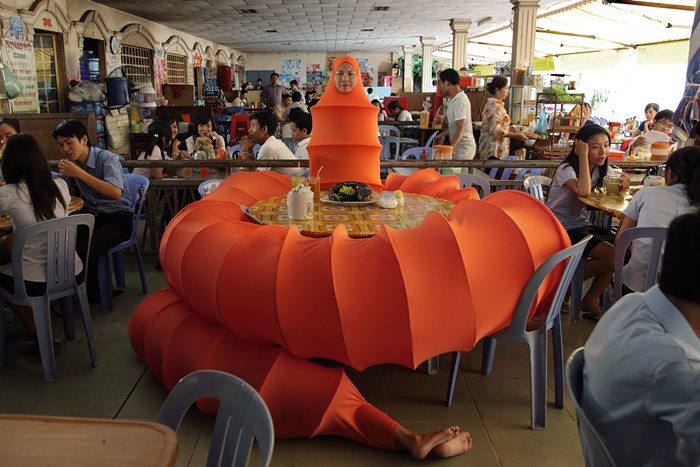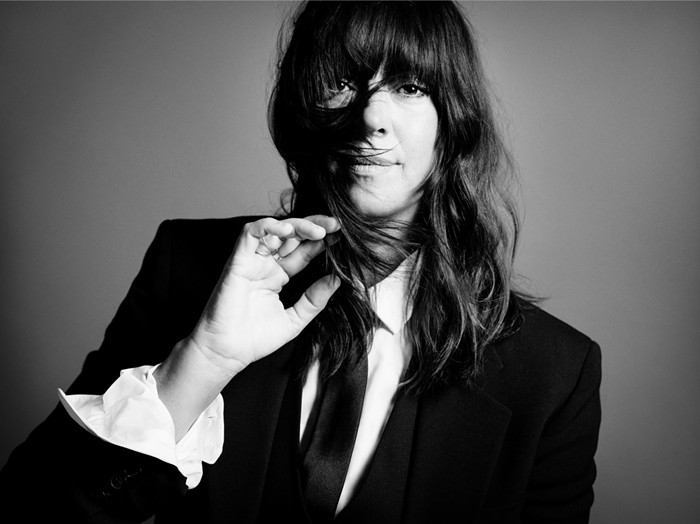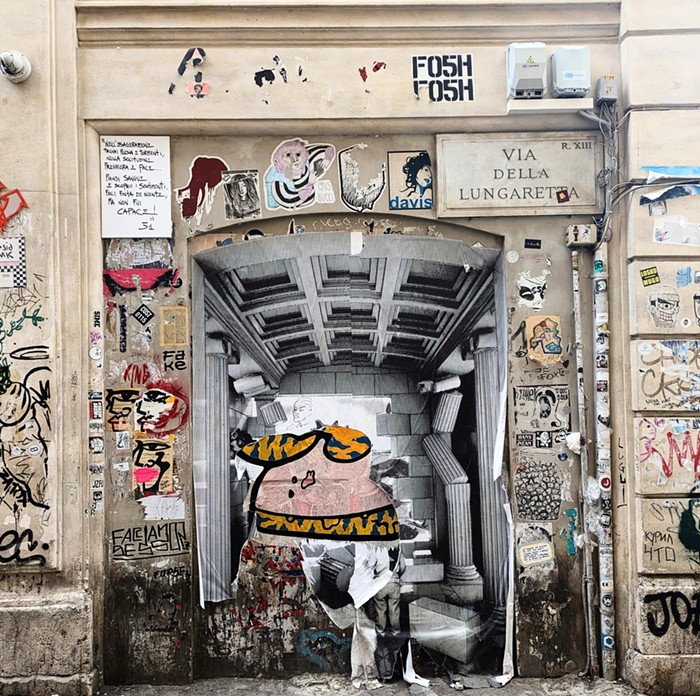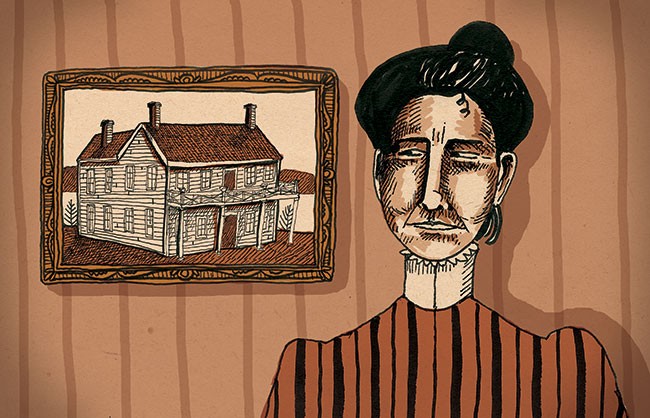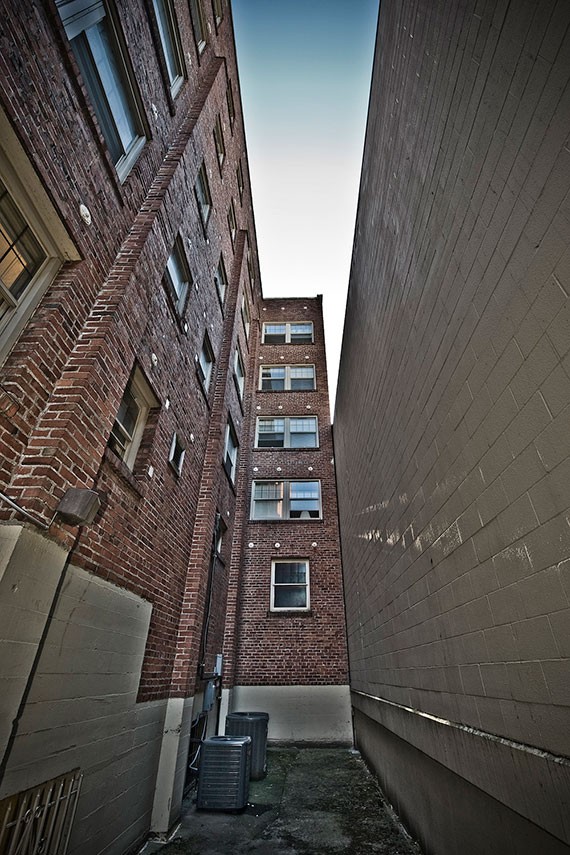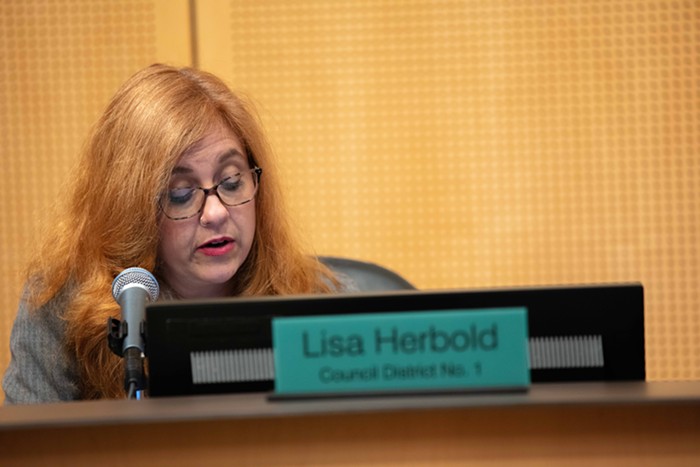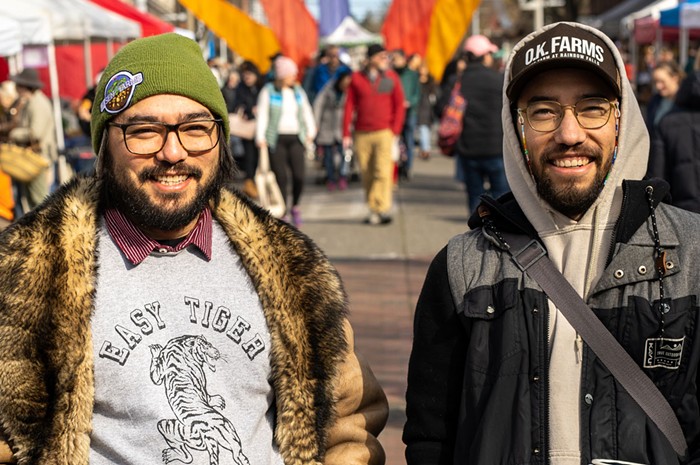Zeitgeist, 583-0497. Through Sept 5.
Drawing: An Intimate Dialogue
SOIL Gallery, 264-8061. Through Aug 26.
The themed group show is the art world's version of the summer movie. Summer is perceived as art's off-season, and summer art shows tend to the easy, sexy, and suggestive. Curators can be as specific or allusive as they like (two exhibitions currently running in New York are called The Body Project and She Lives on Love Street). It's the time to group favorite artists and slippery, cultural, even lowbrow ideas together--and the benefit to the art public is that we feel smart in the sultry, smoggy days of August.
Drawing: An Intimate Dialogue, curated by Joline Abbadessa, Jenny Carcia, and Dylan Mosley, asks and leaves an elegant question open-ended: What defines a drawing? Here, the artists push at the obvious definition, and force it to evolve. Among the more traditional submissions are Tuan Nguyen's big, chunky blobs of paint attached to a seamless background; Clint Jukkala's two versions of Pond, one in charcoal, the other in oil paint; and Philip Van Keuren's set of photographs. Nary a pencil, in these cases, to be seen.
Drawing is largely understood to be a step toward a more finished work, a visual to-do list, as in a sketch toward a painting or an installation. There are, however, artists who consider the drawing a finished work (such as Chris St. Pierre, unfortunately not in this exhibition, with his sublime Nick Drake series), and part of the rhetorical strength of Drawing is that you don't know where these works fall along the timeline of artistic process. Jukkala's charcoal rendering could be a sketch that preceded his oil painting, but since the painting is a variation of a color field, what does the sooty black of the drawing represent? I saw it as a variant investigation of the painting's texture, less permeable, more moody.
Three of Van Keuren's four photographs are titled Study; though they bear little visual connection with the final piece, they appear to be conceptual predecessors. Nguyen simply seems to draw with paint.
I felt a kind of anxiety permeate this show, and I wondered if drawing in general acts as a repository for anxiety--both the artist's and the viewer's--about unresolved ideas. Seen this way, it is a much more protean medium, much better equipped to handle ambivalence about the act of creating. Roger Tibbets' Symmetry 201 resembles mysterious engineering diagrams, with circles and lines drawn as faint as a whisper, some of them precise and tight, others rough approximations, like rogue relatives. Which of these are deliberate? Which are gestures or accidents? Are the erasures mistakes or visual elements? It's impossible to say. And this impossibility contains a lovely mindfuck, the height of intellectual pleasure, if you are into such things.
At Zeitgeist, six artists take a look at paper, another one of art's humble but essential topics. The show features constructions, prints, collage, and assemblage, and the only connection from one piece to the next is that it is on paper, or of paper--so that Paper, like Drawing, tweaks assumptions about seriousness, completeness, and method.
Paper's tweakiest tweak is Gretchen Bennett's Dog Eddy, a series of paper objects "found, altered, sifted, arranged" and hung on the wall in the neat, obsessive manner of a lepidopterist's display. The premise is that some of these found things look like abstracted dogs, with a minimum of signifiers--two ears, two eyes, a mouth--and that some of them have been cut, drawn on, or reassembled to look like dogs. This is a feat of both seeing and creating. Have you ever noticed those plastic-bag cutouts at the supermarket, the part that's left over when a stack of bags is used up? These and Bennett's other items are often negative-space detritus, which brings to mind the same creative anxiety that surrounds a drawing, the relationship of artist's will to the object being acted on.
I could have looked at Dog Eddy for hours. Imagine! I was completely engaged by a crumpled, stepped-on paper towel, a nail file, and a diagram used by Dr. Tinhergen to test the reflexes of baby thrushes (oddly enough, Patrick Holderfield uses this very same shape in his show down the street at James Harris). Sometimes the humblest questions produce the grandest results.
